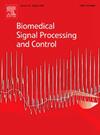Knowledge-aware Attentional Neural Network based healthcare big data analytics optimized with Weighted Velocity-Guided Grey Wolf Optimization Algorithm
IF 4.9
2区 医学
Q1 ENGINEERING, BIOMEDICAL
引用次数: 0
Abstract
A significant increase in data volumes, along with the attractive opportunities and potential arising from data analysis contributes to the idea of Big Data. The existing healthcare big data analytics methods face challenges in handling high-dimensional data, slow convergence and suboptimal feature selection. In this paper, a Knowledge-aware Attentional Neural Network based Healthcare Big Data Analytics optimized with Weighted Velocity-Guided Grey Wolf Optimization Algorithm (KANN-HBA-WVGGWOA) is proposed. Here, the input data are taken from PIMA Indians Diabetes dataset. Then the input data is pre-processed by utilizing Multiparticle Kalman filter (MKF) to calculate every data object value primarily. The feature selection utilizing Improved Bald Eagle Search Optimization Algorithm (IBESOA) to select the optimal features from the dataset. The selected features are given into Knowledge-aware Attentional Neural Network (KANN) to classify the data as diabetes and no diabetes. Finally, Weighted Velocity-Guided Grey Wolf Optimization Algorithm (WVGGWOA) is proposed to optimize the KANN classifier that precisely classifies the diabetes disease. The KANN-HBA-WVGGWOA method is implemented in Python. The proposed KANN-HBA-WVGGWOA method attains 1.28%, 2.22%, and 2.27% higher accuracy; 12.56%, 18.68%, and 19.49% less computational time compared to the existing models: Role of big data analytics for revolutionizing diabetes management including health care decision-making (BDA-LR-RDMH), Map reduce dependent big data framework utilizing associative kruskal poly kernel classifier for diabetic disorder prediction (BDF-MRPK-DDP) and the Implementation of ML approaches with big data along IoT to generate effectual prediction for health informatics (BD-KNN-PHI) respectively.
基于加权速度导向灰狼优化算法优化的基于知识感知注意力神经网络的医疗保健大数据分析
数据量的显著增加,以及数据分析带来的诱人机会和潜力,促成了大数据的概念。现有的医疗大数据分析方法在处理高维数据、收敛速度慢和特征选择次优等方面面临挑战。本文提出了一种基于加权速度导向灰狼优化算法(KANN-HBA-WVGGWOA)的基于知识感知注意力神经网络的医疗大数据分析方法。这里,输入数据取自PIMA印第安人糖尿病数据集。然后利用多粒子卡尔曼滤波(Multiparticle Kalman filter, MKF)对输入数据进行预处理,首先计算出每个数据对象的值。特征选择利用改进的白头鹰搜索优化算法(IBESOA)从数据集中选择最优特征。将选择的特征输入到知识感知注意神经网络(KANN)中,对数据进行糖尿病和非糖尿病分类。最后,提出了加权速度引导灰狼优化算法(WVGGWOA)来优化KANN分类器,实现对糖尿病疾病的精确分类。KANN-HBA-WVGGWOA方法在Python中实现。提出的KANN-HBA-WVGGWOA方法的准确率分别提高了1.28%、2.22%和2.27%;与现有模型相比,计算时间分别减少了12.56%、18.68%和19.49%:大数据分析在糖尿病管理(包括医疗保健决策)中的革命性作用(BDA-LR-RDMH),利用关联kruskal多核分类器进行糖尿病疾病预测的Map reduce依赖大数据框架(BDF-MRPK-DDP),以及利用大数据和物联网实现ML方法生成有效的健康信息学预测(BD-KNN-PHI)。
本文章由计算机程序翻译,如有差异,请以英文原文为准。
求助全文
约1分钟内获得全文
求助全文
来源期刊

Biomedical Signal Processing and Control
工程技术-工程:生物医学
CiteScore
9.80
自引率
13.70%
发文量
822
审稿时长
4 months
期刊介绍:
Biomedical Signal Processing and Control aims to provide a cross-disciplinary international forum for the interchange of information on research in the measurement and analysis of signals and images in clinical medicine and the biological sciences. Emphasis is placed on contributions dealing with the practical, applications-led research on the use of methods and devices in clinical diagnosis, patient monitoring and management.
Biomedical Signal Processing and Control reflects the main areas in which these methods are being used and developed at the interface of both engineering and clinical science. The scope of the journal is defined to include relevant review papers, technical notes, short communications and letters. Tutorial papers and special issues will also be published.
 求助内容:
求助内容: 应助结果提醒方式:
应助结果提醒方式:


